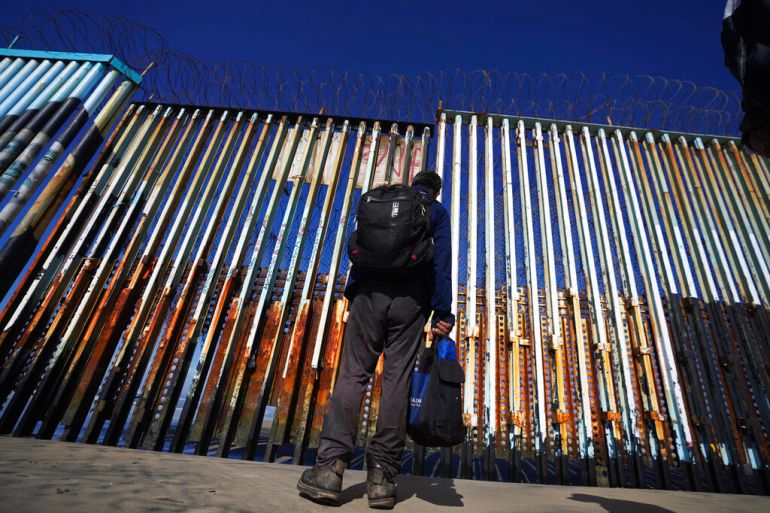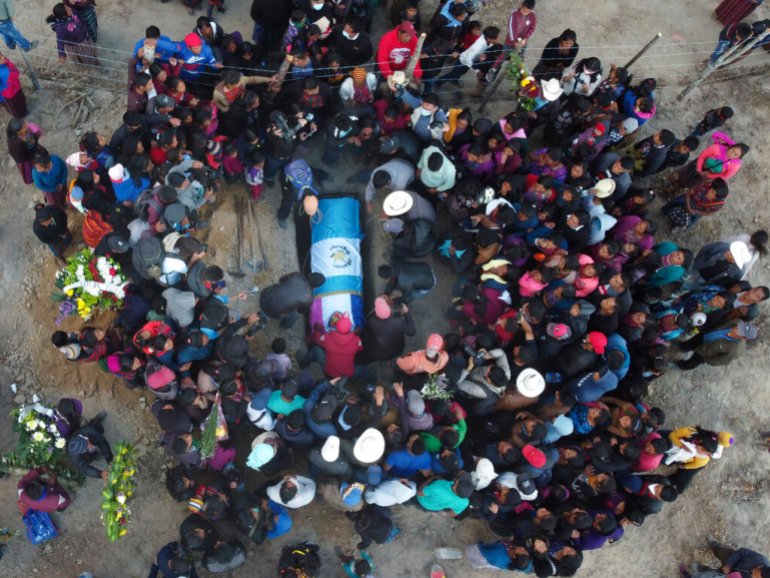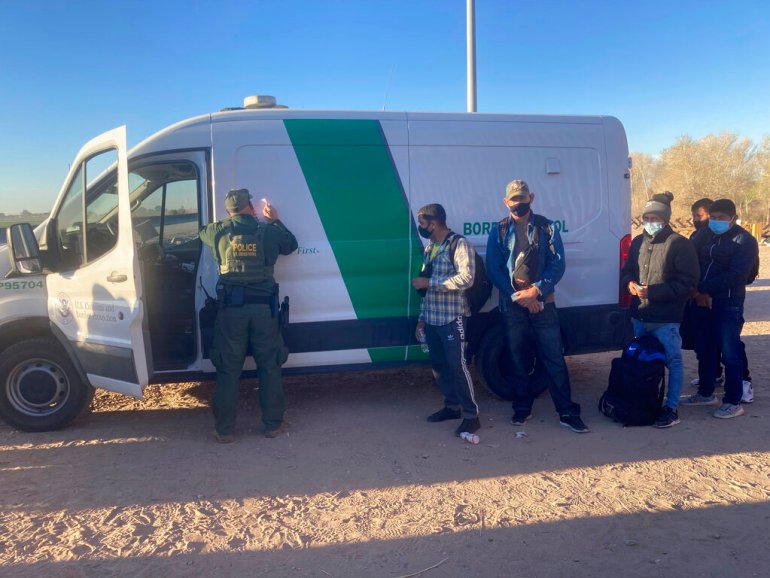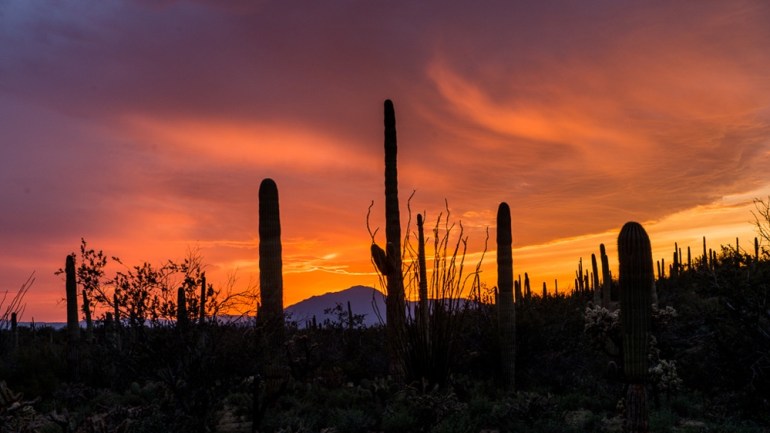One in four drivers taking migrants from Mexican border is a teen
Dodging drones and border patrol pursuit, American teens use cellphones’ GPS to locate migrants seeking to move inland.

Seventeen-year-old Santi sits in his car outside shops in Sunland Park, New Mexico, watching a pulsing blue dot on his mobile telephone.
Human smugglers have hired him to pick up migrants here, less than a mile from the Mexican border, and take them to nearby El Paso, Texas.
Keep reading
list of 4 itemsNumber of migrants crossing dangerous Darien Gap soars: UNHCR
In Mexico border camps, families ‘wait for US doors to open’
Indian family that froze to death at Canada-US border identified
His shiny red mobile phone pings every 15 seconds. He and the migrants share locations, as a contact on the US side messages instructions.
The high schooler with a high-fade haircut is among a growing number of US teenagers in communities from Texas to California recruited to transport migrants crossing the Southwest border, according to US Customs and Border Protection.
About one in four drivers caught smuggling migrants last year in the Sunland Park-Santa Teresa area were children, most US citizens living locally, according to US Border Patrol, which began recording the juvenile driver data in fiscal year 2021.
Mexican youth have long guided migrants into the United States. Recruiters tell both Mexican and US teens they are unlikely to face legal consequences because they are minors, according to government and law enforcement officials, attorneys, migrant advocates, and local residents who spoke to Reuters.
US children as young as 14 learn of the work from social media and friends and transport mainly Mexican adults.
The young drivers can earn hundreds of dollars per migrant, and locals jokingly call them “Ubers”. Some see it as a way to get ahead in Sunland Park, a working-class town with three times the national poverty rate where a third of residents are under 18 and many children live with grandparents.
But the job can be dangerous and federal authorities in New Mexico appear keen to crack down on the juvenile drivers.
Teen drivers tend to flee at high speed when officers try to stop them, according to Border Patrol officials. That can lead to pursuits by Border Patrol and crashes.

Good Day for Pickups
Santi is parked about 900 feet west of a white and green US Border Patrol pickup. The migrants are hiding in the desert about 1,000 feet south.
Smuggling groups in Ciudad Juarez, Mexico, took advantage of a cloudy night to push migrants across rocky Mount Cristo Rey where there is no border barrier.
US agents in helicopters struggle to see migrants through clouds, and strong winds may be stopping their drones from flying, according to Santi.
“It’s a good day for pickups,” said the teen, who asked to be identified only as Santi and that his vehicle details not be disclosed because ferrying migrants is illegal.
Field agents check migrants’ phones for information and pass it to anti-smuggling units looking for drivers, group leaders and local “stash houses” where migrants wait before travel.
Gerardo Galvan, the patrol agent in charge of the Sunland Park area, noticed the rise in juvenile drivers in 2021 after a 14-year-old fled agents and crashed into a Border Patrol van.
“They’re told that if they go fast enough, we’re going to stop pursuing them,” Galvan said.
Galvan said he was working with the US Attorney’s Office in Las Cruces, New Mexico, to charge juvenile drivers.
The office of the federal defender in Las Cruces represented four minors for migrant smuggling in the first few months of 2022 after six cases in all of 2021, according to Assistant Federal Public Defender Amanda Skinner.
Unless the child has been in trouble before, most juvenile cases result in probation until the age of 21, she said.
“We don’t typically see higher-ups charged. The vast majority of our cases are drivers,” said Skinner.

Criminalised Youth
Sunland Park Mayor Javier Perea sees no easy fix to the juvenile driver problem. Meanwhile, the administration of President Joe Biden expects another record-breaking year for migrant arrests on the southwest border. A COVID-era policy that blocked most asylum claims is set to lift in May.
“The last thing we want to do is criminalise our youth,” said Perea, whose town provides work opportunities for teenagers and is planning an outreach program to deter drivers.
For activists like Irma Cruz, teen drivers are caught between the multi-billion-dollar human smuggling business and the US government’s policy to “militarise” the border as a deterrence.
“They’re easy prey, and they’re being used,” said Cruz, campaign director for Border Network for Human Rights, an immigration advocacy group that also educates border residents on civil rights.
Of greatest concern are incidents such as when an El Paso 18-year-old crashed his sedan crammed with 10 people after being chased by Border Patrol in 2020. Four local teens and three migrants were killed.

The American Civil Liberties Union and US lawmakers are calling on Border Patrol to only chase suspects at high speed if they believe a violent felony has been committed.
“If Border Patrol itself knows that such a high percentage of the drivers of these vehicles in particular areas are children being recruited in this way, then that should hedge against them conducting these types of dangerous vehicle pursuits,” said ACLU lawyer Shaw Drake.
Galvan said agents attempting to stop a vehicle did not know whether the driver was a child or adult. He said agents are not to engage in pursuits around schools and in residential areas at busy times of day and must receive permission from a supervisor to continue a chase.
Santi has transported migrants for a year and has been stopped by Border Patrol but never charged. He knows the stakes will be higher once he is 18.
When the parked Border Patrol truck drives off down McNutt Road, Santi heads towards a migrant rendezvous.
“I don’t want to go to jail for this,” he says.